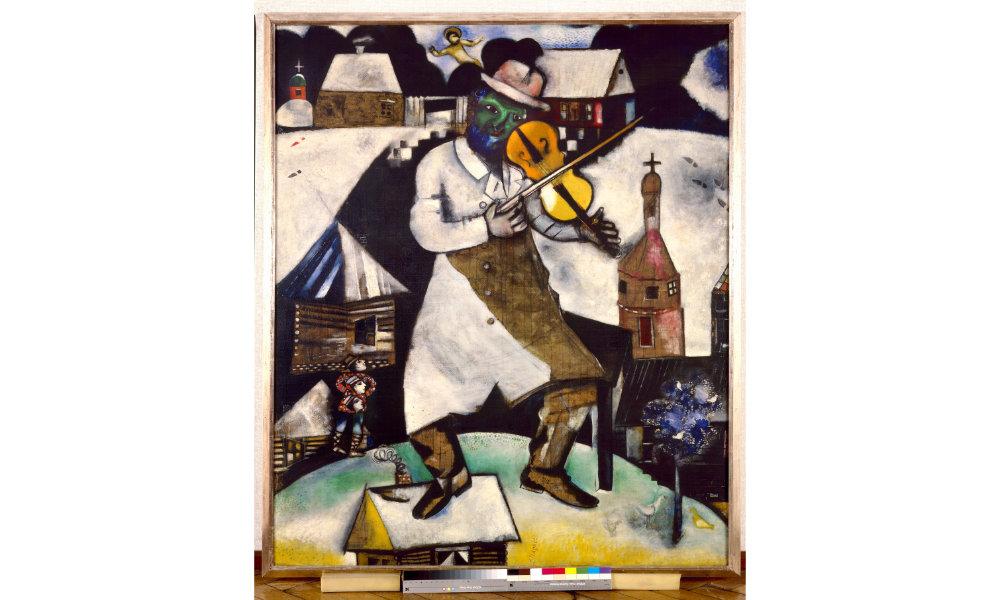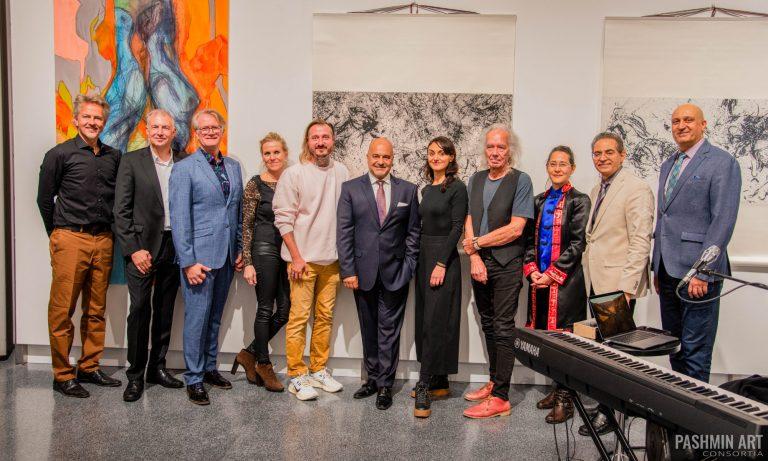The violinist invades the central space of this large painting, a format over which reigns supreme: dancing in support of the foot on the roof of a house, and around it you can see a hamlet reminiscent of Vitebsk, where Chagall spent his childhood and youth. Uprooted in Paris, the artist goes into the memories of his native Russia, to everything that constitutes his nature, to the Jewish culture, which is always present in his thoughts. In France there is a new abundance, a new architectural vision, paint at night and visit the galleries and museums by day, the Loucz among them. He visits the French avant-garde and discovers a culture completely unknown to him. Chagall is a born colorist. And in this painting, he uses a rich and somber palette to depict the city, a palette that is not accidental in the face of the Fiddler, who is green, in blue beard and snow-colored cloak like the roofs of the humble houses that surround it. The violin, yellow, brings another distinct sonority and makes the composition begin to sing amidst a saraband where everything is. It moves at a devilish pace. It is a popularly inspired art that acquires a universal character through its style.
Sources: Prat, Jean-Louis (2012) Chagall. Thyssen-Bornemisza Museum, Madrid, pp.118-119.



